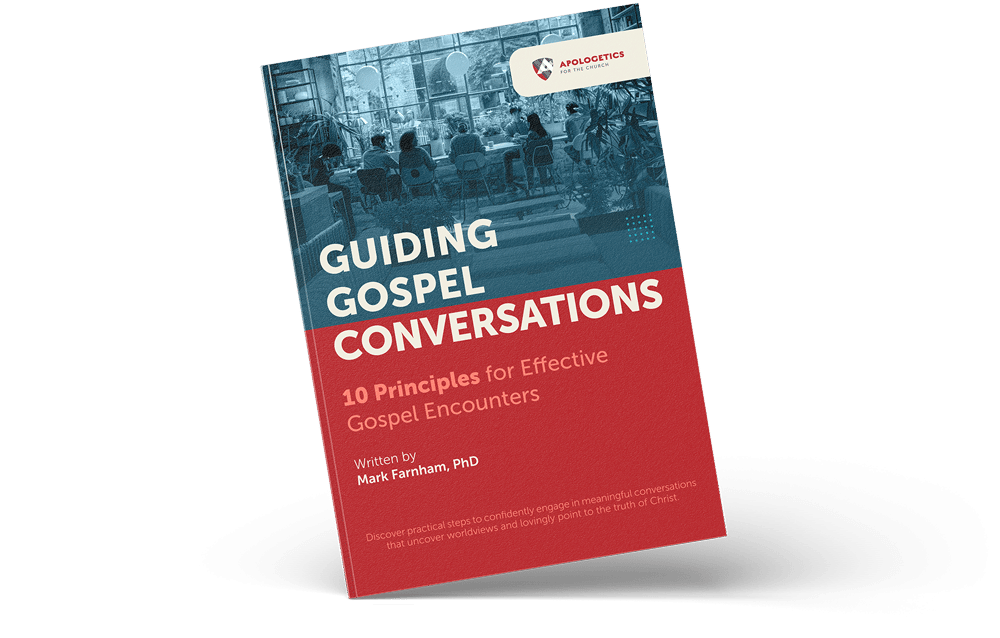Download The Free Guide
Discover practical conversation skills to get unbelievers thinking and make way for the Spirit’s work in their lives.
"*" indicates required fields
The issue of abortion has never been more contentious among Christians. I’m not referring to debates between Christians and non-Christians, but among those who profess to be followers of Jesus.
So, let’s get back to the basics of what abortion is. A straightforward scientific definition of abortion is “the termination of a pregnancy by the death of the embryo or fetus.” Pro-Choice advocates have recently sought to minimize any sense of the personhood of the baby in the womb by redefining abortion as “inducing fetal demise” or “removing the pregnancy.” In addition, abortion is now being cast as a basic human right and “reproductive justice.” On the Planned Parenthood website any reference to the baby in the womb is avoided. It is a “pregnancy” being removed, not a baby.
I ask my progressive friends, however, will you admit what the act of abortion really is? Will you look at the medical description of abortion without blinking, and can you say afterward that this shouldn’t be a major consideration in how you vote? In reality, abortion is the single issue that determines the votes of people on both sides of the issue.
[In this article I will use the terms embryo and fetus interchangeably for the baby in the womb. Embryo is usually used for the first 9-11 weeks of life, while fetus can be used at any stage of development. When referring to humans the etymology of the terms simply mean human “young one” or “offspring.”]
There are several methods of abortion that are used in the first, and sometimes second, trimester of pregnancy. A medical abortion uses powerful drugs to cause the embryo to be expelled within a few days. Clinical (surgical) abortions are more graphic in their methods. First, in a Dilation and Curettage (D&C) the mother’s cervix is dilated, and the surgeon inserts an instrument (curette) to scrape the wall of the uterus, cutting the human embryo to pieces and removing the placenta from its place in the uterine wall.
Second, vacuum curettage (aspiration), or suction, is often used in combination with a D&C. The abortionist uses suction with a force 28 times that of a vacuum cleaner to tear both the embryo and placenta from the uterus into a jar. (The Planned Parenthood website calls this “gentle suction to empty your uterus”). The doctor then reassembles all the pieces of the embryo to ensure that nothing is left behind in the uterus. More than 85% of abortions take place in the first trimester.
Third, in the saline method a needle is inserted through the mother’s abdomen into the amniotic sac, and some of the fluid is removed and replaced with a solution of concentrated salt. The baby breathes in and swallows the salt and is poisoned. The outer layer of skin is burned off and the brain hemorrhages. It takes the baby about one hour to die. The next day the mother goes into labor and delivers the dead baby.
As horrific as these procedures are, abortion performed in the third trimester is worse. Dilation and Extraction (D&X) and Dilation and Evacuation (D&E) are methods used in what is sometimes called “partial birth abortions.” These procedures are also used in the unfortunate case of miscarriage, but in an abortion they are used on an intact baby, or one that would survive outside the womb if given care. The intact baby is delivered feet first until all but the head is outside the womb. A doctor then punctures the skull and scrambles the brains. Alternately, the mother’s cervix is dilated, and the doctor pulls the viable baby apart piece by piece. The baby cannot be vacuumed out because it is too large.
Although late-term abortions are rare, any act of destroying an embryo or fetus in the womb is essentially the same scientifically. It is the destruction of a unique individual that is genetically human. This leads me to my next article, coming soon: “Roe v. Wade Was Decided (Partly) on Science Denial.”
Mark Farnham is coauthor of the forthcoming book, Talking About Ethics: A Conversational Approach (Kregel, 2021).
POCKET GUIDE TO EVANGELISTIC & APOLOGETIC QUESTIONS DOWNLOADABLE RESOURCE The Pocket Guide to Evangelistic & Apologetic Questions by Jeff Mindler...
“An ordinary male unrestrained by religious or moral scruple, and faced with a wide variety of willing partners who demand no emotional commitment, or even to...
In the Netflix documentary, Reversing Roe, at around the 28:00 mark, Sarah Weddington, the attorney who argued Roe v. Wade before the Supreme Court in 1973,...